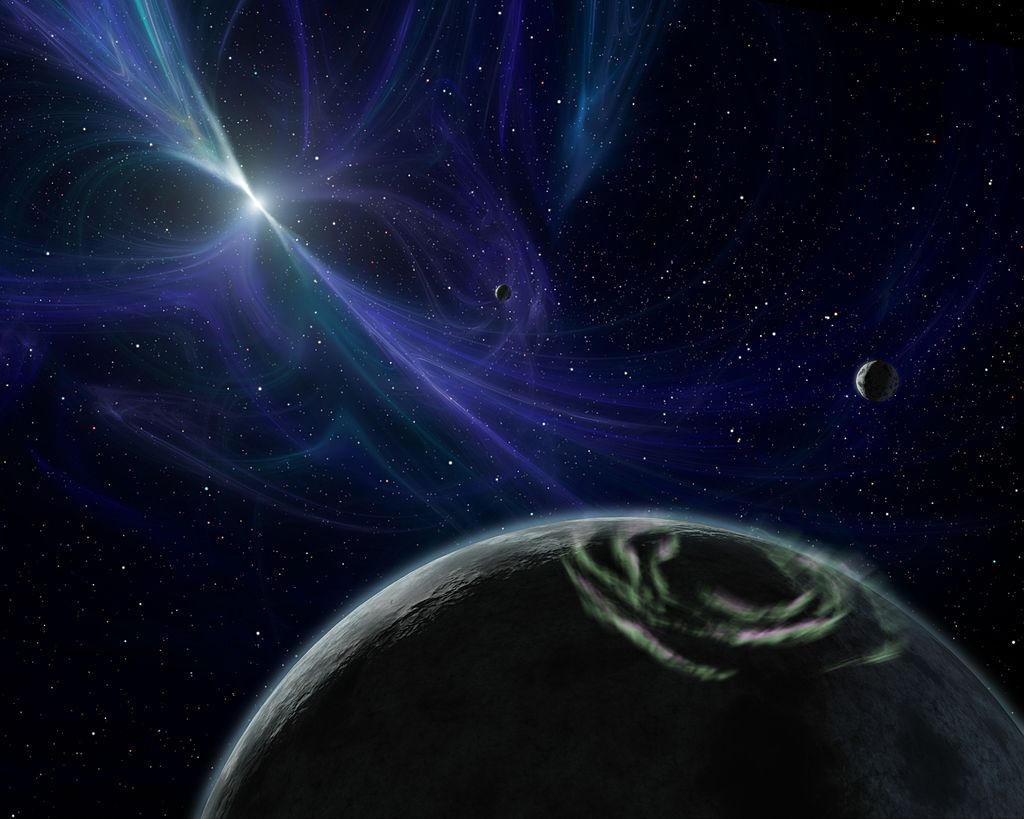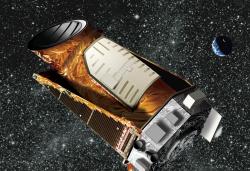The History of Exoplanets
The First Discoveries
For hundreds of years, people have wondered if there were planets outside our Solar System. This idea has now become real, thanks to huge leaps in technology. We are now able to search for these exoplanets.

Credit: Wikimedia Commons
Giordano Bruno was one of the first people to think that other stars might also have planets. This was way back in the 16th century. It was an idea that Isaac Newton agreed with. He wrote, "...if the fixed stars are the centres of similar systems, they will all be constructed according to a similar design."
By the late 19th century, people were starting to claim they had found these so-called exoplanets. One of the first was the astronomer, William Jacob. He saw anomalies in the orbits of the stars in the 70 Ophiuchi binary system. He said these could be from a planet orbiting the system. More work by Thomas See seemed to confirm what William thought. Thomas calculated there was a dark object orbiting the stars every 36 years. With better telescopes, we now know that this isn't true. Although that hasn't stopped the planets around these stars from appearing in sci-fi works like Star Trek and Dune!
During the 20th century, astronomers carried on looking for planets around other stars. In 1988, they saw changes in the movement of the star, Gamma Cephei. Although it was thought that these were caused by a planet orbiting the star, it wasn't confirmed until 2002! This was due to the technology getting better and making the data more accurate. But by 2002, other exoplanets had been found.
The first exoplanet was discovered in 1992. In fact, the first discovery wasn't just 1 planet it was 2! Poltergeist and Phobetor were found orbiting a pulsar called PSR B1257+12. In 1994, a much smaller 3rd planet was found in the system, named Draugr. These new worlds opened up a new field of astronomy and were soon followed by other discoveries!

Credit: NASA/JPL-Caltech/R. Hurt (SSC)
In 1995, Swiss scientists Michel Mayor and Didier Queloz found the first exoplanet to orbit a star similar to our Sun. They used the radial velocity technique to find 51 Pegasi b. They collected spectra from its parent star to work out that the planet orbited its star every 4.23 days. 51 Pegasi b has a similar mass to Jupiter but is much closer to its star. It is more than 7 times nearer its star than Mercury is to our Sun! This kind of exoplanet is often called a 'hot Jupiter'.
However, the first evidence of an exoplanet may have been found much earlier than that. But scientists at the time did not realize what they had found! In 2016, scientists re-examined a photograph of a white dwarf star called Van Maanen 2. The data had been collected back in 1917 at a telescope in the USA. They found that the photo showed heavy elements in the star's outer layers. These could not have been made inside the star, because they would have sunk to the star's centre. Some scientists think the elements have come from the dust of a nearby planet.
The Hunt for Exoplanets
There have been many projects to search for and study exoplanets. Some use telescopes based on the ground, while others use spacecraft.
In 2005, the first direct detection of a planet outside our Solar System took place. This discovery was made using the Spitzer Space Telescope.

Credit: NASA/JPL-Caltech
In 2016, the Transiting Planets and Planetesimals Small Telescope (TRAPPIST) in Chile made a major discovery. It found an exoplanet system that contained at least seven planets. Three of those planets are Earth-sized.
NASA’s Kepler and K2 missions revolutionized the search for exoplanets. Using the transit method, they found more than 2,600 new worlds. Even though the missions ended in 2018, researchers are still finding planets in the data that Kepler collected.
In 2021, the James Webb Space Telescope was launched. This is the largest space telescope ever built. It will reveal new worlds in ways never seen before. It will even be able to tell us what the atmospheres of exoplanets are made of.

